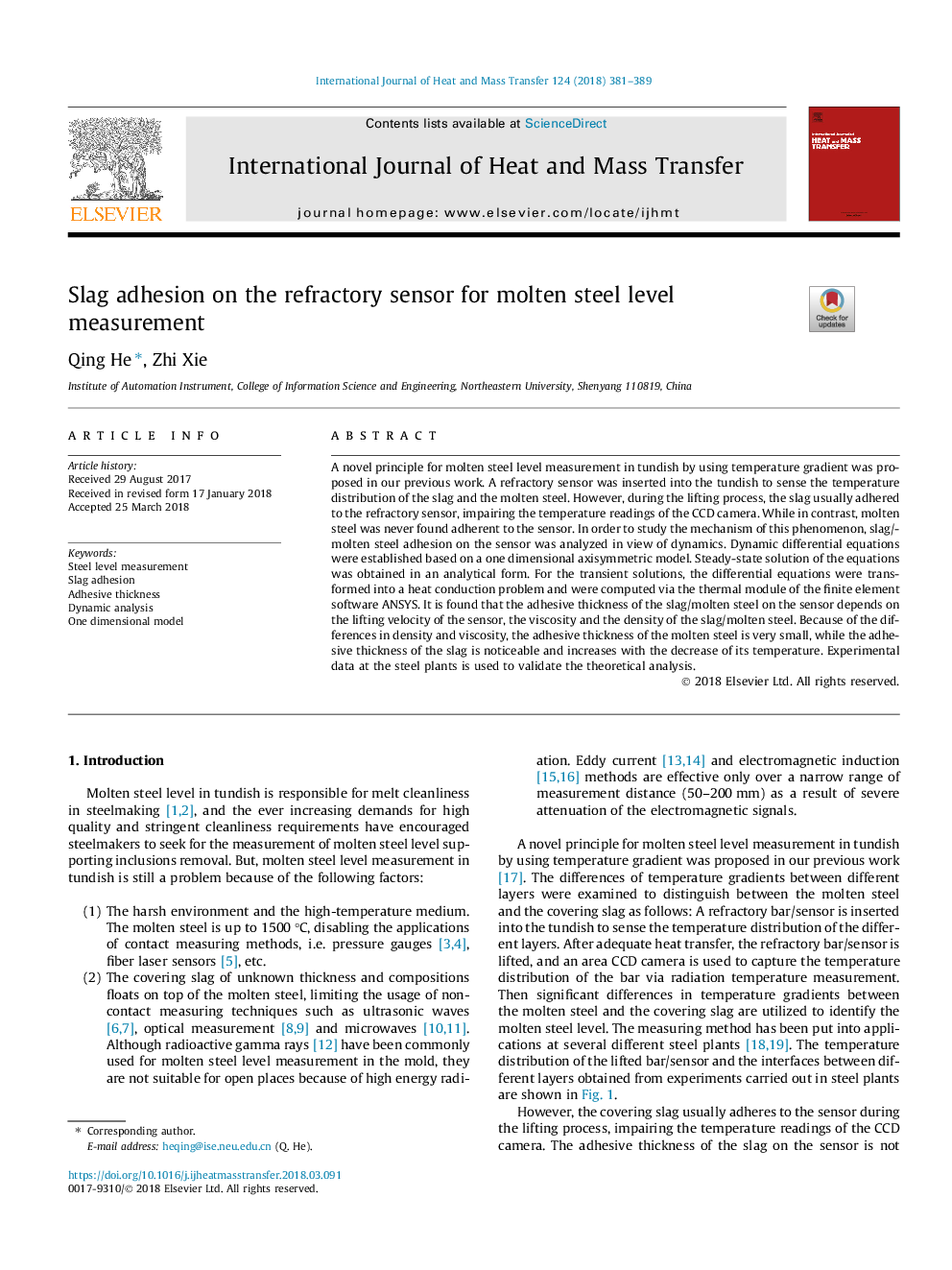| Article ID | Journal | Published Year | Pages | File Type |
|---|---|---|---|---|
| 7054181 | International Journal of Heat and Mass Transfer | 2018 | 9 Pages |
Abstract
A novel principle for molten steel level measurement in tundish by using temperature gradient was proposed in our previous work. A refractory sensor was inserted into the tundish to sense the temperature distribution of the slag and the molten steel. However, during the lifting process, the slag usually adhered to the refractory sensor, impairing the temperature readings of the CCD camera. While in contrast, molten steel was never found adherent to the sensor. In order to study the mechanism of this phenomenon, slag/molten steel adhesion on the sensor was analyzed in view of dynamics. Dynamic differential equations were established based on a one dimensional axisymmetric model. Steady-state solution of the equations was obtained in an analytical form. For the transient solutions, the differential equations were transformed into a heat conduction problem and were computed via the thermal module of the finite element software ANSYS. It is found that the adhesive thickness of the slag/molten steel on the sensor depends on the lifting velocity of the sensor, the viscosity and the density of the slag/molten steel. Because of the differences in density and viscosity, the adhesive thickness of the molten steel is very small, while the adhesive thickness of the slag is noticeable and increases with the decrease of its temperature. Experimental data at the steel plants is used to validate the theoretical analysis.
Keywords
Related Topics
Physical Sciences and Engineering
Chemical Engineering
Fluid Flow and Transfer Processes
Authors
Qing He, Zhi Xie,
